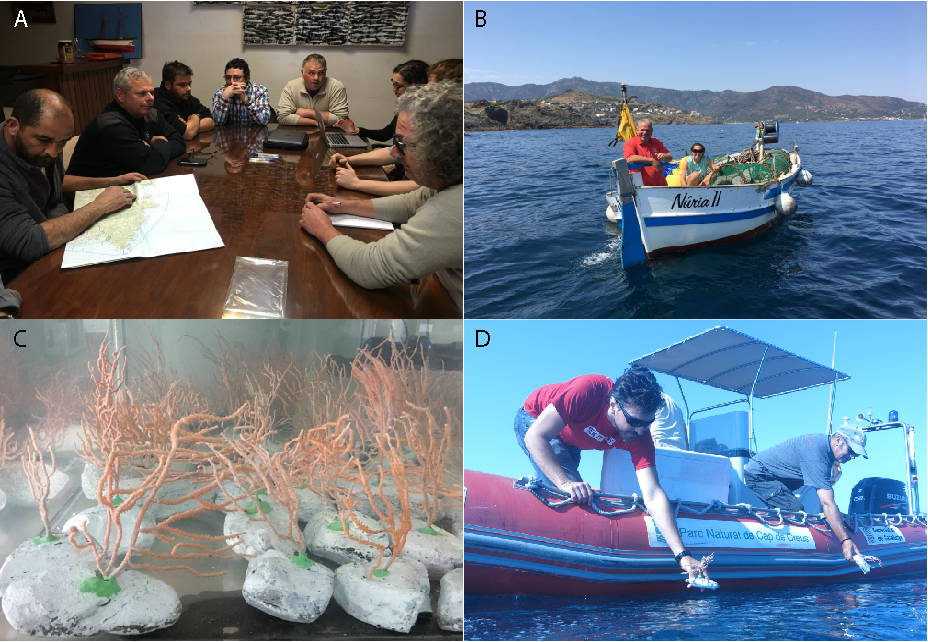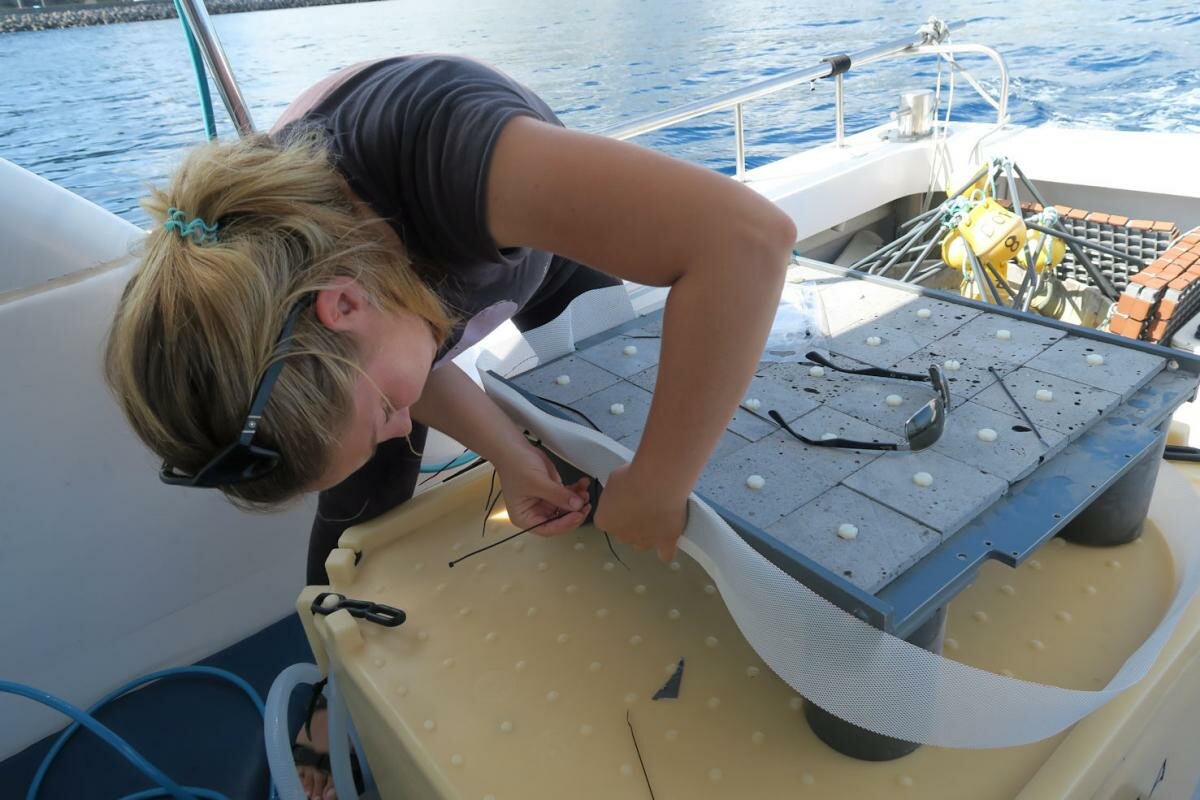Setting the scene
Cold-water coral (CWC) habitats dwell on continental shelves, slopes, seamounts, and ridge systems around the world’s oceans from 50 m to depths up to 4000 m. These highly diverse ecosystems have been threatened by human stressors such as fishing activities, gas and oil exploitation, and climate change. CWC coral species have life history traits, such as long lifespan and slow growth that make them very vulnerable to the escalating threats. For these reasons it is extremely important to explore the viability of assisted regeneration with biotic intervention (i.e. active restoration) to enhance and speed up the recovery of these impaired ecosystems.
Ecological Restoration of CWC Populations Review
In contrast to terrestrial and shallow-water marine ecosystems, ecological restoration in deep marine environments has not yet received much attention and there is still little knowledge about it, especially about coral restoration techniques that can be applied. In this sense, the review aims to discuss restoration techniques and identify the ones most suitable to restore CWC populations. By means of an extensive literature systematic research we have examined coral restoration actions carried out to date, from shallow waters to deep-sea environments.
CWC Restoration Techniques Discussion and Future Perspectives
Through the literature review, a number of common coral restoration techniques were identified such as transplantation, artificial reefs or coral gardening. Outcomes from the few restoration actions performed to date on CWC reefs and coral gardens provide evidence of the feasibility of transplanting fragments of adult coral colonies on artificial structures as the more viable and reliable method to restore these ecosystems. One of the main advantages of using large transplants is the accelerated recovery of habitat forming functions such as the provision of refuges for a large number of associated species provided by the high structural complexity. However, past restoration actions have generally obtained coral transplants from healthy coral donor areas, altering these preserved areas. To overcome this, scientists in the Mediterranean and the Azores have started collaborative initiatives with fishermen to use by-catch corals to replant them back at sea (Figure 1 and 2).

Figure 1. Restoration initiative of CWC garden carried out on the Mediterranean continental shelf, where local fishermen collaborate with scientists. A) Meeting between local fishermen and scientists. B) Scientist collecting by-catch gorgonian colonies during a fishing event. C) Gorgonian transplants in aquarium. D) Returning gorgonian transplant to the continental shelf with the collaboration of fishermen.

Figure 2. Restoration initiative of CWC garden carried out on the Azores with coral colonies accidentally captured by fishing activities. A) Coral lander preparation and B) Coral lander deployment.
In tropical coral habitats, the wide use of coral larval rearing techniques has the advantage of reducing the damage to existing donor reefs and also producing higher genetic diversity which provides more potential for habitat self-support. However, the little knowledge available on CWC reproduction and larval ecology (small-scale recruitment patterns, dispersal abilities and settlement cues) alongside slow growth, hinders the application of rearing techniques to CWC populations. An alternative approach, which does not require larval rearing, is assisted regeneration with physical interventions by deploying artificial or natural substrates where corals can naturally settle (Figure 3). This approach is useful for gathering more information on larval stages of CWC and could be a viable technique for ecological restoration in cases where substrate is a limiting factor (e.g. after future mining impacts). One applied example of this approach is “rigs-to-reefs” program, where decommissioned rigs are maintained in place as hard substrate suitable for settlement of some species, such as Lophelia pertusa.

Figure 3. Preparation of settlement plates made of basalt tiles (naturally occurring substrate type in the Azores).
To ensure the long-term viability and success of any restoration action it is essential to include long-term monitoring programs to evaluate the health and growth of coral transplants, and to ideally combine it with natural spontaneous regeneration (i.e. passive restoration) strategies such as the implementation of deep-sea marine protected areas (MPAs). However, to protect a desirable area and to avoid all the coral degradation drivers is not always possible. For this reason, collaboration between scientists and local fishermen is, once again, important and necessary for the improvement and implementation of new practices that can reduce anthropogenic impacts on benthic communities.
We conclude that combination of unassisted (passive) and assisted (active) restoration approaches with implication of local society (e.g., local fishermen) would be the best optimal option to achieve and ensure CWC restoration success.
For further information contact the Mediterranean team Andrea Gori, Università del Salento (andrea.gori@unisalento.it), Cristina Linares, Universitat de Barcelona, Barcelona (cristinalinares@ub.edu), or Maria Montseny, Institut de Ciències del Mar, Barcelona (montseny@icm.csic.es) and the Azores team Marina Carreiro-Silva, (carreirosilvamarina@gmail.com), Telmo Morato (t.morato@gmail.com) or Meri Bilan (meribilan@gmail.com), Institute of Marine Research, University of the Azores.

